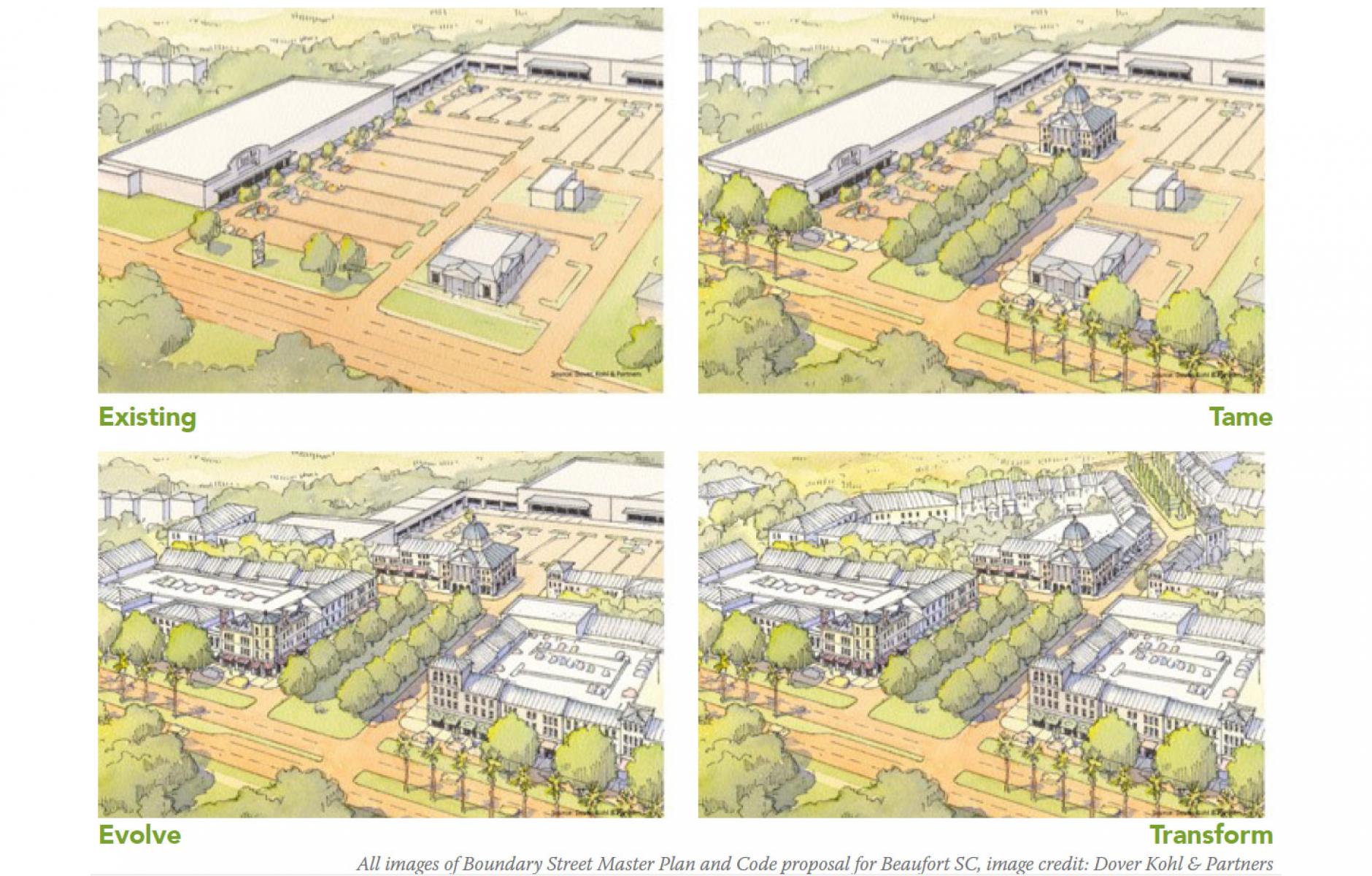
Incremental steps toward pedestrian-friendly suburbs
Note: This list of steps comes from Enabling Better Places: Commercial Corridors and Shopping Malls, a report by CNU and the Michigan Municipal League.
Reforming places in your community that have a suburban, auto-oriented, single-use development pattern can feel like an overwhelming task. As the adage states, the best way to eat an elephant is one bite at a time. Reorienting suburban neighborhoods for pedestrians requires an incremental yet integrated approach, calibrated to local needs, prioritized according to public aspirations, and targeted to specific areas within the community. There are proven techniques to draw from, which communities across the country have used to rescale significant parts of their sprawling suburbs into thriving social hubs.
- Share a Vision and Draft a Plan: Identifying specific goals can help a community understand what they are and where they want to grow and change. You need to know where you want to go before you determine how you’ll get there.
- Identify Existing Assets: Valuing what you have as a community is an important step in understanding what you are and where you can go. Each city and town has unique structures or systems or resources that can be leveraged to empower change.
- Leverage Infrastructure Investments: Public investments can lead to private investments and new development, but local governments need to carefully align their leverage with the goals of their community and the outcomes they are seeking.
- Align Codes and Ordinances: Regulations can make or break the manner in which a community is able to grow and change. Rescaling suburban environments relies on codes and ordinances prioritizing people over cars and mixed-use over monocultures.
- Get the Streets Right: Streets are fundamental to the successful reordering of priority when improving an outdated suburban environment. Right-sizing suburban streets can invite new investment, encourage new uses, and even create new developable land.
- Get the Parking Right: In an antiquated suburban environment, neatly aligned with mis-designed streets is misallocated parking. Relocating and simply reducing parking is a central step in adapting from placeless sprawl to walkable urbanism.
- Add More Green: Suburbs were conceived as bucolic oases of landscape, when in most cases suburban environments are dominated by massive zones of hostile hardscape. Revitalization with the help of public green spaces can be a transformative tool.
- Change Land Use: Adaptive reuse is an important task in rescaling and revitalizing outdated land use, and the suburban environment is no different. Offering an alternative vision for existing buildings engages developers in a community’s vision for change.
- Anticipate What’s Next: The process of rescaling suburban communities can be long and difficult, but seeing the road ahead will help a municipality measure their success, manage development outcomes, and maintain a sense of place amidst change.
Additional details on every step can be found in Enabling Better Places: Commercial Corridors and Shopping Malls.




